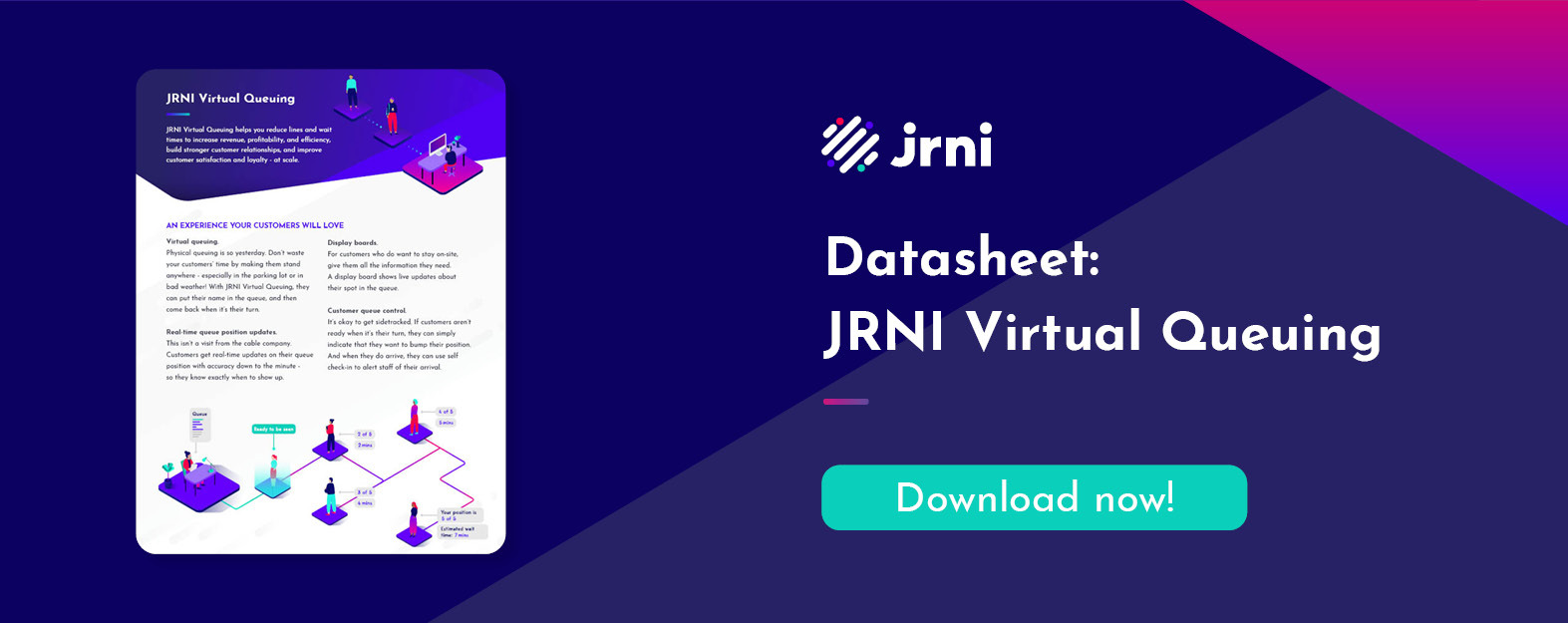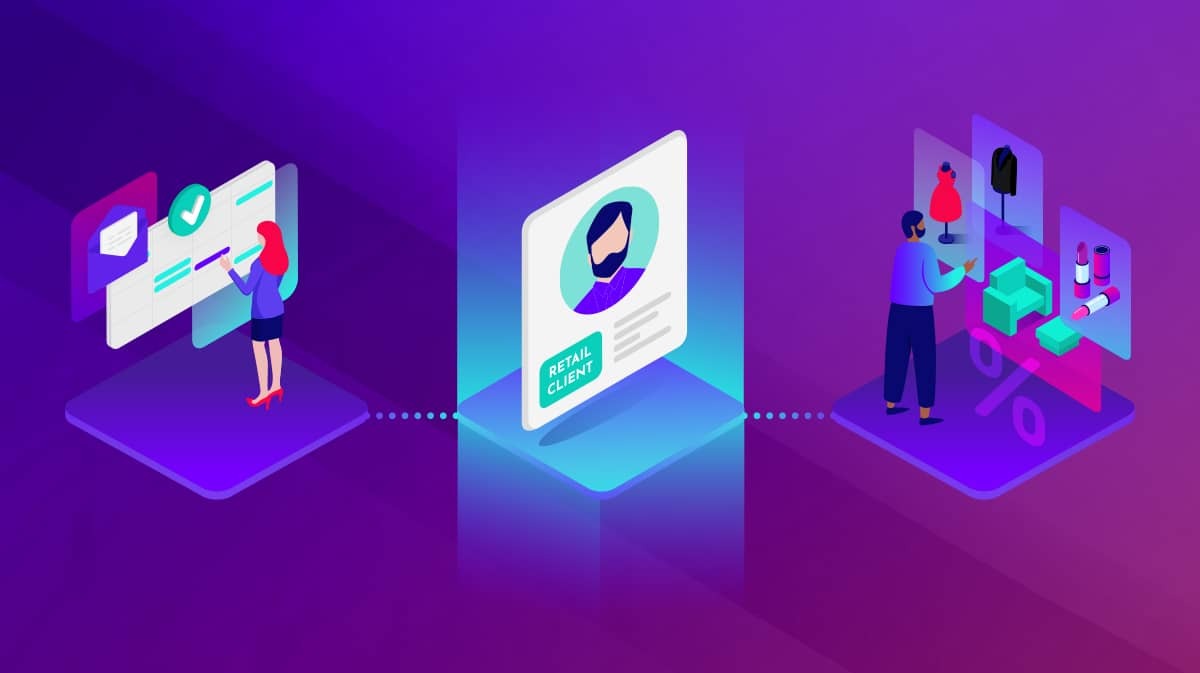“I want to wait in a line…” said no one ever! Especially not anymore. We’ve been hearing it, and we know you have too - consumers simply won’t wait in a physical line anymore.
Recent events have accelerated digital transformation across industries, and technology has become even more essential for businesses to meet ever-increasing demands. This increase in technology has truly empowered consumers to take things into their own hands - and has given them both choice and convenience. Their financial institutions have given them options to bank from anywhere and their favorite brands have made it easy to shop online and find instant gratification through curbside pickup. They are used to getting what they want, when they want it - and that expectation is here to stay.
Many businesses have implemented a virtual queuing solution to mitigate the need for physical lines and to improve the customer experience. Banks and credit unions have used it to manage their lobbies. Retailers have implemented it as a way to give customers the option to safely wait in their car until it’s their turn for a one-to-one appointment, or pickup.
Virtual queuing will continue to be a key way to provide a frictionless, seamless customer experience as businesses propel forward. Let’s explore the advantages of virtual queuing and how businesses are using it to manage lines and wait times to improve the overall customer experience.
Improving the waiting experience
No one likes waiting… and as we already mentioned, no one wants to stand in a physical line anymore. Virtual queuing allows customers to join a line without having to physically be in that line. Depending on the service, they can wait where it is most comfortable and convenient: their homes, their cars, wherever they are.
Virtual queue management solutions give customers the option to use their mobile device to reserve a place in line and receive a notification when it is their turn. Providing customers this type of control over their waiting experience helps reduce frustration. Whether for an appointment or pickup services, virtual queuing is a seamless way to satisfy customers:
For pre-booked appointments: Once a customer arrives for their appointment on site, they can simply join the virtual queue to notify staff that they’ve arrived. They can wait in their car until it’s their turn for their appointment.
For new appointments: Instead of booking a future appointment, some customers would prefer to join a virtual queue to speak with an expert - whether they are looking for outfit suggestions for an upcoming wedding or seeking financial advice. Customers can join a virtual queue and be notified when a staff member is ready to meet with them for their selected service.
For pickup services: As customers arrive to pick up their orders, whether inside or curbside, they can join a virtual queue that gives them notification when their order is ready inside or when they can expect a staff member to deliver the order curbside - helping to further improve the curbside experience.
For lobby management: Whether in a bank or medical office, this enables people to avoid sitting in a confined space for a period of time while they’re awaiting service.
Additionally, to make greater improvements to the overall experience, you can look into creating a digital waiting experience. By creating a digital waiting room, you can educate and entertain customers as they wait. Highlight some of your top sellers, or new financial services. Create an interactive game or quiz that also educates your audience about your products or services.
All in all, a virtual queuing system will lead to an enhanced customer experience, the type of experience that will keep your customers coming back for more.
Why virtual queuing systems work
A virtual queuing system includes both front-end and back-end features that improve the experience for your customers and your staff. From the customer side, they have an easy time finding the services they want to book and joining the queue. Virtual queue management systems can also send the customer a predicted wait time and alerts when they are close to the front of the line. Additionally, customers can manage their place “in line” if they aren’t ready to be served.
By putting control in the customers’ hands, providing clear communication, and giving them the option to wait from the comfort of their cars, homes, or wherever they choose - virtual queuing makes improving the waiting experience easy.
Additionally, virtual queuing systems provide your staff with a robust dashboard that ensures they are able to focus on servicing their customers without worrying about having to manage customer flow and lines. This type of dashboard can help them prepare by sharing information on what types of services the customers need, who is next in line, and how long they’ve been waiting. Using this type of technology can ease the interactions between your staff and customers, ensuring your staff remains focused on personalizing the interaction and providing great customer service!
Virtual queuing in practice: Dunelm
In addition to appointment scheduling for their Made to Measure program, Dunelm implemented virtual queuing to improve the customer shopping and pickup experience. Customers are able to join a virtual queue via their phone or using a QR code, and are then notified when their items are ready for collection.
“Dunelm ran an extensive trial, and JRNI triumphed with the best solution for us. Colleagues have found it easy to manage, and customers have found it easy to use.”
Grace Henry, In-Store Service Project Manager at Dunelm
Physical lines are out, and virtual queuing is in! If you’re looking for a way to provide a pleasant waiting experience and improve both the customer and staff experience, then it’s time to consider a virtual queuing solution. To learn more, reach out to one of our experts! Or, if you want to learn more about the advantages of a virtual queuing system, then check out these resources:
For more information on virtual queuing solutions, please reference our latest Virtual Queuing datasheet.




